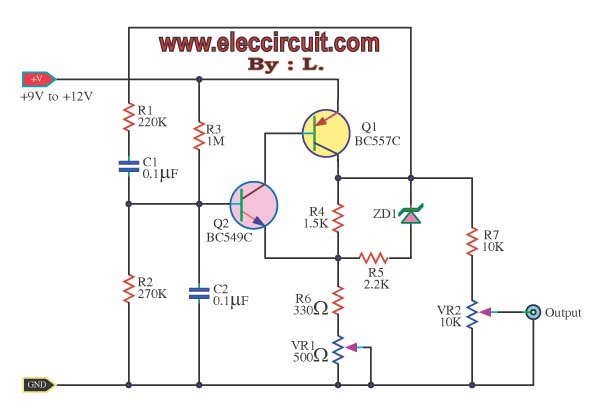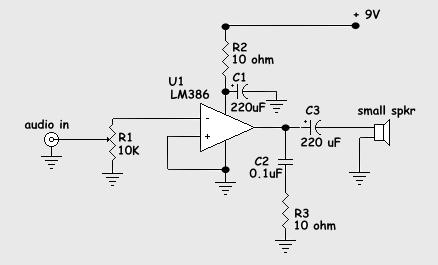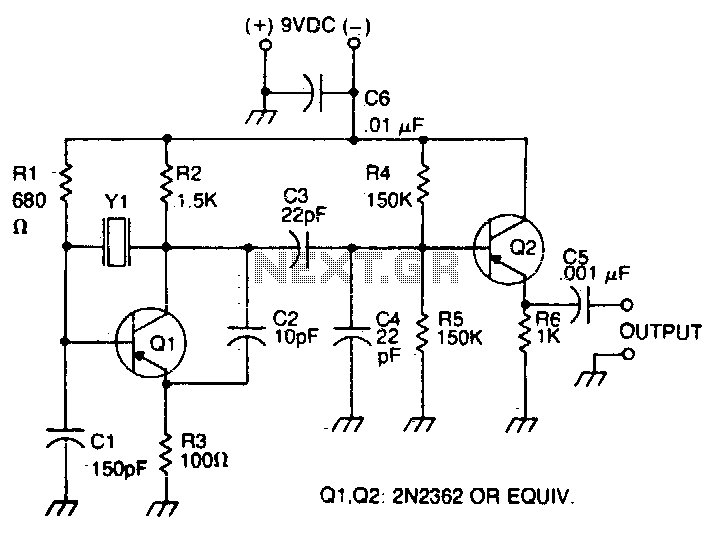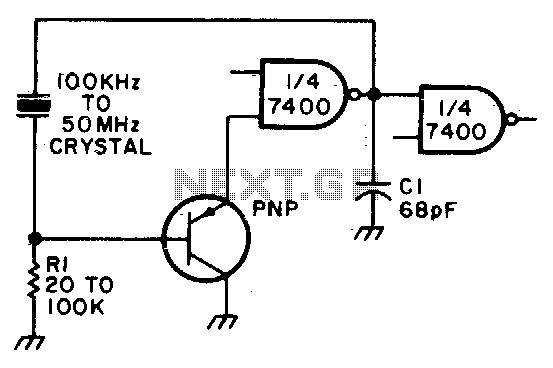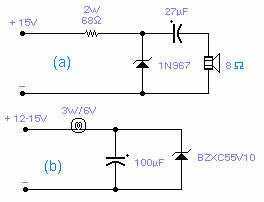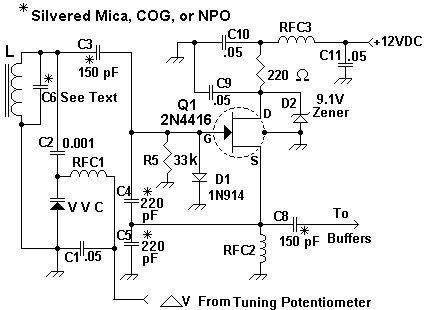
ASTABLE BLOCKING OSCILLATOR
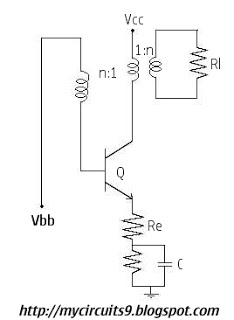
Initially, there is a voltage Vc on capacitor C1 that is greater than Vbb - Vg, where Vg is the cutoff base-emitter voltage and g represents Gamma. Consequently, the transistor is in the off state, and capacitor C1 discharges exponentially towards ground with a time constant of R1C1. When V1 becomes equal to Vbb - Vg, the base current begins to flow, causing the transistor to exit the cutoff state. The current flow through the collector reduces the collector voltage, and through the inductive coupling of the pulse transformer, the base voltage increases. This increase in base voltage further enhances the base current, which in turn increases the collector current. This regenerative action quickly drives the transistor into saturation. A pulse is generated, and during the pulse duration tp, capacitor C1 is recharged to a voltage V1 that exceeds its initial value at the beginning of the pulse. After the pulse, the transistor exits saturation, and the regenerative action returns it to the cutoff state. The transistor remains off for a duration tp, during which capacitor C1 discharges to the voltage level that allows transistor Q to re-enter its active region. The cycle then repeats.
The described circuit operates as a pulse generator utilizing a transistor and a capacitor. Initially, the capacitor C1 holds a voltage greater than the difference between the supply voltage (Vbb) and the base-emitter cutoff voltage (Vg). In this state, the transistor remains off, and C1 discharges through resistor R1, following an exponential decay characterized by the time constant τ = R1C1.
Once the voltage across C1 (V1) decreases to the threshold Vbb - Vg, the transistor begins to conduct. This transition marks the beginning of the regenerative process: the collector current increases, which reduces the collector voltage. The reduction in collector voltage induces an increase in the base voltage through the pulse transformer, leading to a further increase in base current. This positive feedback loop rapidly drives the transistor into saturation, allowing it to generate a pulse.
During the duration of the pulse (tp), capacitor C1 is recharged, and its voltage rises above the initial value. After the pulse ends, the transistor exits saturation and returns to the cutoff state. During this cutoff period, C1 discharges again until the voltage drops to the level that permits the transistor to enter its active region once more. This cyclical process enables the generation of a series of pulses, with the frequency and duty cycle determined by the values of R1, C1, and the characteristics of the pulse transformer and transistor.
The design of this circuit is crucial in applications where pulse generation is needed, such as in oscillators, timing circuits, and switching power supplies. Proper component selection and configuration are essential to ensure reliable operation and desired performance characteristics.Assume initially, that there is a voltage Vc on capacitor C1 larger than Vbb-Vg. Where Vg is the cut in base to Emitter voltage and g represent Gamma. Hence the transistor is off and the capacitor C1 discharges exponentially towards ground with a time constant R1 C1. When V1 becames equal to Vbb-Vg, the base current starts to flow and the transist or comes out of cutoff. The flow of current through collector further lowers the collector voltage and through inductive coupling of pulse Transformer increases the base voltage. This further increases the base current and hence the collector current. This regenerative action quickly brings the transistor in saturation. The pulse is generated and during the pulse duration tp, the capacitor C1 is recharged and attains a voltage V1, which is larger than the value it had at the beginning of the pulse.
The transistor comes out of saturation and the regenerative action brings it in the cutoff. The transistor now remains off for a time tp during which capacitor C1 discharges to the voltage at which transistor Q again enters its active region. At this point the cycle repeats itself. 🔗 External reference
The described circuit operates as a pulse generator utilizing a transistor and a capacitor. Initially, the capacitor C1 holds a voltage greater than the difference between the supply voltage (Vbb) and the base-emitter cutoff voltage (Vg). In this state, the transistor remains off, and C1 discharges through resistor R1, following an exponential decay characterized by the time constant τ = R1C1.
Once the voltage across C1 (V1) decreases to the threshold Vbb - Vg, the transistor begins to conduct. This transition marks the beginning of the regenerative process: the collector current increases, which reduces the collector voltage. The reduction in collector voltage induces an increase in the base voltage through the pulse transformer, leading to a further increase in base current. This positive feedback loop rapidly drives the transistor into saturation, allowing it to generate a pulse.
During the duration of the pulse (tp), capacitor C1 is recharged, and its voltage rises above the initial value. After the pulse ends, the transistor exits saturation and returns to the cutoff state. During this cutoff period, C1 discharges again until the voltage drops to the level that permits the transistor to enter its active region once more. This cyclical process enables the generation of a series of pulses, with the frequency and duty cycle determined by the values of R1, C1, and the characteristics of the pulse transformer and transistor.
The design of this circuit is crucial in applications where pulse generation is needed, such as in oscillators, timing circuits, and switching power supplies. Proper component selection and configuration are essential to ensure reliable operation and desired performance characteristics.Assume initially, that there is a voltage Vc on capacitor C1 larger than Vbb-Vg. Where Vg is the cut in base to Emitter voltage and g represent Gamma. Hence the transistor is off and the capacitor C1 discharges exponentially towards ground with a time constant R1 C1. When V1 becames equal to Vbb-Vg, the base current starts to flow and the transist or comes out of cutoff. The flow of current through collector further lowers the collector voltage and through inductive coupling of pulse Transformer increases the base voltage. This further increases the base current and hence the collector current. This regenerative action quickly brings the transistor in saturation. The pulse is generated and during the pulse duration tp, the capacitor C1 is recharged and attains a voltage V1, which is larger than the value it had at the beginning of the pulse.
The transistor comes out of saturation and the regenerative action brings it in the cutoff. The transistor now remains off for a time tp during which capacitor C1 discharges to the voltage at which transistor Q again enters its active region. At this point the cycle repeats itself. 🔗 External reference
